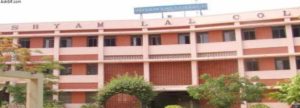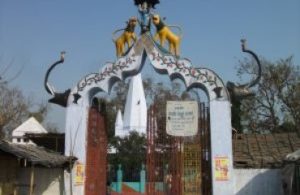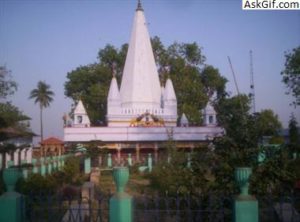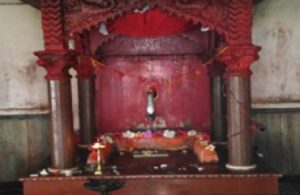It is also known as Farakiya in local region. There is an interesting story behind it. Five centuries ago Akbar, then the king of Mughal empire directed his revenue minister Todarmal to map his entire empire. But he could not map this region now known as Khagaria due to difficult terrain, rivers and dense forests. So, he named it Farakiya (Farak in Hindi means separate). Now there is even a weekly newspaper- ‘Farkiyanchal Times’ (albeit published arbitrarily).
In Early days Khagaria district was a part of the district of Munger, as a subdivision. The sub-division of Khagaria was created in the Year 1943-44. It was upgraded as district, with effect from 10th May, 1981,
How To Reach
By Air(Airport):-
Nearest airport is Patna about 145 km
By Rail :-
Khagaria(KGG) is strategically located in Sonepur Division of the East Central Railway . It had three railway lines – the north Eastern Railway, passing west to East had four Stations – Khagaria, Mansi, Maheshkhunt and Pasraha . One branch Line shot off from Khagaria passing through Olapur and Imli, while another branch line shot off from Mansi, which went up to Saharsa.
By Road :-
Khagaria is linked to other cities via NH 31,107 Other road – Pansalwa Beldaur Road,Khagaria to Alouli,Khagaria to Bakhari, Khagaria to Son Manki, Maheshkhunt to Aguwani Ghat,REO-Mansi to Badla Ghat,Pasaraha to Maraiya,Alouli To Bakhari,
Pirnagara to Beldaur, Zero Mile to Beldaur Baluwahi Bus Stand NH- 31 falls within the jurisdiction of Khagaria district. NH-31 goes right up to Guwahati and is an important road link of Bihar to the north – eastern part of the country and to Northern
Popular tourist destinations
KHAGARIA BLOCK
Shyamlal National High School:-  This high school was established in 1910. Late Shri Shyamlal donated his entire property and formed a trust board under inspiration from Dr. Rajendra Prasad and Dr. S.K. Sinha. The students and teacher of this school played a very important role in the freedom movement. The school used to be a meeting ground of the Krantikaris.
This high school was established in 1910. Late Shri Shyamlal donated his entire property and formed a trust board under inspiration from Dr. Rajendra Prasad and Dr. S.K. Sinha. The students and teacher of this school played a very important role in the freedom movement. The school used to be a meeting ground of the Krantikaris.
Bograha:- The KP Jaysawal Research Institute, during in the course of its Archaeological Explorations brought to light the site period Early medieval. Belaganj:- The KP Jayaswal Research Institute, during in the course of its Archaeological Explorations brought to light the site period Early medieval. Ranko Dih:- The KP Jayaswal Research Institute, during in the course of its Archaeological Explorations brought to light the site period NBPW phase. Sanhauli Dih:- The KP Jayaswal Research Institute, during in the course of its Archaeological Explorations brought to light the site period Early medieval. Bachhauta:- The KP Jayaswal Research Institute, during in the course of its Archaeological Explorations brought to light the site period Late medieval. Simri:- The KP Jayaswal Research Institute, during in the course of its Archaeological Explorations brought to light the site period Early medieval. Bela:- The KP Jayaswal Research Institute, during in the course of its Archaeological Explorations brought to light the site period NBPW phase. Rahima:-The KP Jayaswal Research Institute, during in the course of its Archaeological Explorations brought to light the site period Early medieval. Dohraiya:- The KP Jayaswal Research Institute, during in the course of its Archaeological Explorations brought to light the site period Early medieval. Barai:- The KP Jayaswal Research Institute, during in the course of its Archaeological Explorations brought to light the site period Early medieval. Bhagwanchak:- The KP Jayaswal Research Institute, during in the course of its Archaeological Explorations brought to light the site period Early medieval. Kauniya:- The KP Jayaswal Research Institute, during in the course of its Archaeological Explorations brought to light the site period NBPW phase. Bhadas:- The KP Jayaswal Research Institute, during in the course of its Archaeological Explorations brought to light the site period Early medieval. Marar:- The KP Jayaswal Research Institute, during in the course of its Archaeological Explorations brought to light the site period Medieval.
ALAULI BLOCK
Alauli:- The KP Jayaswal Research Institute, during in the course of its Archaeological Explorations brought to light the site period NBPW phase. Ladaura Dih:- The KP Jayaswal Research Institute, during in the course of its Archaeological Explorations brought to light the site period NBPW phase. Amba Icharua:- The KP Jayaswal Research Institute, during in the course of its Archaeological Explorations brought to light the site period Gupta. Dubiahi:- The KP Jayaswal Research Institute, during in the course of its Archaeological Explorations brought to light the site period NBPW phase. Hathwan:- The KP Jayaswal Research Institute, during in the course of its Archaeological Explorations brought to light the site period Early medieval. Santokh Dih:- The KP Jayaswal Research Institute, during in the course of its Archaeological Explorations brought to light the site period Early medieval. Sumbha Dih:- The KP Jayaswal Research Institute, during in the course of its Archaeological Explorations brought to light the site period Early medieval. Murli dih:- The KP Jayaswal Research Institute, during in the course of its Archaeological Explorations brought to light the site period NBPW phase. Bahadurpur:- The KP Jayaswal Research Institute, during in the course of its Archaeological Explorations brought to light the site period Early medieval. Asurar:- The KP Jayaswal Research Institute, during in the course of its Archaeological Explorations brought to light the site period Early medieval. Budhaura:- The KP Jayaswal Research Institute, during in the course of its Archaeological Explorations brought to light the site period NBPW phase. Kano Dih (Nista):- The KP Jayaswal Research Institute, during in the course of its Archaeological Explorations brought to light the site period Early medieval. Bhagwanpur:- The KP Jayaswal Research Institute, during in the course of its Archaeological Explorations brought to light the site period Early medieval. Giddha:- The KP Jayaswal Research Institute, during in the course of its Archaeological Explorations brought to light the site period Early medieval. Parri Dih (Padri):- The KP Jayaswal Research Institute, during in the course of its Archaeological Explorations brought to light the site period NBPW phase. Bhikharighat:- The KP Jayaswal Research Institute, during in the course of its Archaeological Explorations brought to light the site period NBPW phase. Sahsi:- The KP Jayaswal Research Institute, during in the course of its Archaeological Explorations brought to light the site period Kushan. Chhil Kouri:- The KP Jayaswal Research Institute, during in the course of its Archaeological Explorations brought to light the site period Early medieval. DihMachhra:- The KP Jayaswal Research Institute, during in the course of its Archaeological Explorations brought to light the site period Early medieval. Piparpaiti:- The KP Jayaswal Research Institute, during in the course of its Archaeological Explorations brought to light the site period Early medieval. Sonihar:-The KP Jayaswal Research Institute, during in the course of its Archaeological Explorations brought to light the site period Early medieval. Imli dih:- The KP Jayaswal Research Institute, during in the course of its Archaeological Explorations brought to light the site period NBPW phase. Pirrahi:- The KP Jayaswal Research Institute, during in the course of its Archaeological Explorations brought to light the site period Early medieval. Sirsiya:- The KP Jayaswal Research Institute, during in the course of its Archaeological Explorations brought to light the site period Early medieval. Goriami:- The KP Jayaswal Research Institute, during in the course of its Archaeological Explorations brought to light the site period NBPW phase. Dhimki:- The KP Jayaswal Research Institute, during in the course of its Archaeological Explorations brought to light the site period Early medieval. Ratnaha:- The KP Jayaswal Research Institute, during in the course of its Archaeological Explorations brought to light the site period Early medieval. Jolhiniya:- The KP Jayaswal Research Institute, during in the course of its Archaeological Explorations brought to light the site period NBPW phase. Gamhariya:- The KP Jayaswal Research Institute, during in the course of its Archaeological Explorations brought to light the site period NBPW phase. Meghauna:- The KP Jayaswal Research Institute, during in the course of its Archaeological Explorations brought to light the site period NBPW phase. Roun dih:- The KP Jayaswal Research Institute, during in the course of its Archaeological Explorations brought to light the site period Early medieval. Aurah:- The KP Jayaswal Research Institute, during in the course of its Archaeological Explorations brought to light the site period NBPW phase. Phultora Dih:- The KP Jayaswal Research Institute, during in the course of its Archaeological Explorations brought to light the site period NBPW phase. Cherakhera:- The KP Jayaswal Research Institute, during in the course of its Archaeological Explorations brought to light the site period Early medieval.
PARBATTA BLOCK
Pipra Latif:- The KP Jayaswal Research Institute, during in the course of its Archaeological Explorations brought to light the site period Early medieval. Mahaddipur:- The KP Jayaswal Research Institute, during in the course of its Archaeological Explorations brought to light the site period Early medieval. Bhorkhat:- The KP Jayaswal Research Institute, during in the course of its Archaeological Explorations brought to light the site period Early medieval. Lagar:- The KP Jayaswal Research Institute, during in the course of its Archaeological Explorations brought to light the site period Early medieval. Harinmar:- The KP Jayaswal Research Institute, during in the course of its Archaeological Explorations brought to light the site period Early medieval. Bharat Khand:- The KP Jayaswal Research Institute, during in the course of its Archaeological Explorations brought to light the site period Late medieval. Karna:- The KP Jayaswal Research Institute, during in the course of its Archaeological Explorations brought to light the site period Early medieval.
GOGRI BLOCK
Sher:- The KP Jayaswal Research Institute, during in the course of its Archaeological Explorations brought to light the site period Early medieval. Jamalpur:- The KP Jayaswal Research Institute, during in the course of its Archaeological Explorations brought to light the site period Early medieval. Jargaon:- The KP Jayaswal Research Institute, during in the course of its Archaeological Explorations brought to light the site period Early medieval. Gogri:- The KP Jayaswal Research Institute, during in the course of its Archaeological Explorations brought to light the site period Medieval. Jhiktiya:- The KP Jayaswal Research Institute, during in the course of its Archaeological Explorations brought to light the site period NBPW phase. Kharaua:- The KP Jayaswal Research Institute, during in the course of its Archaeological Explorations brought to light the site period NBPW phase. Sondih:- The KP Jayaswal Research Institute, during in the course of its Archaeological Explorations brought to light the site period NBPW phase.
MANSI BLOCK
Katyayani :-  Katyayani Asthan is situated at distance of approximately 12 km from the District headquarters It is on the bank of river Koshi, between the stations Badlaghat and Dhamaraghat , which are stations on Mansi-Saharsa rail line. Temples of Ma Katyayani , as well as of Ram, Lakshman and Ma Janaki is situated at this place.
Katyayani Asthan is situated at distance of approximately 12 km from the District headquarters It is on the bank of river Koshi, between the stations Badlaghat and Dhamaraghat , which are stations on Mansi-Saharsa rail line. Temples of Ma Katyayani , as well as of Ram, Lakshman and Ma Janaki is situated at this place.
 It is said that Rishi Katyayan was performing Tapasya on the bank of river Kaushiki(now Koshi) when Ma Durga- the deity of Shakti took ‘avtar’ in child form and was accepted by Rishi as his daughter.
It is said that Rishi Katyayan was performing Tapasya on the bank of river Kaushiki(now Koshi) when Ma Durga- the deity of Shakti took ‘avtar’ in child form and was accepted by Rishi as his daughter.
Another story says that around 300 years ago, this place used to be dense forest. One day a devotee Shripat Maharaj saw Ma Katyayani in dream and as per her directions constructed an earthen Temple at that place and started worshiping her. In the year 1951, the temple was reconstructed.
As per the local folk traditions, Ma Katyayani is worshiped in two forms in this area. Some devotees worship Ma Katyayani as Sidh Peeth, while a large number of devotees worshiped as Lok Devi- Devi of Milk Cattles, that is why devotees offer raw milk to the deity.